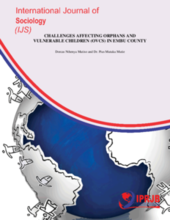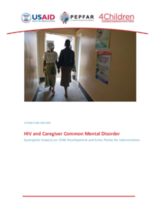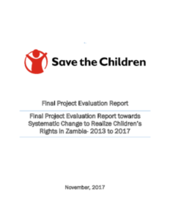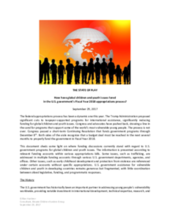Displaying 61 - 70 of 414
The purpose of this study was to assess the challenges affecting orphans and vulnerable children (OVCS) in Embu County.
In this paper, the authors review published literature on the mental health status of mothers living with HIV (MLH) and how this affects their children; outline the pathways between maternal HIV, maternal mental health problems, and negative child outcomes; and then describe a number of intervention entry points that they argue have the potential to enhance impact across PEPFAR platforms.
This study sought to examine the feasibility of rejuvenating and strategically repositioning the Zunde raMambo (King’s granary) as a traditional orphans and vulnerable children (OVC) coping mechanism in Zimbabwe with a special reference to Gutu District.
The focus of this study is to explore the role of lay health workers in a community organization providing palliative care to orphans and vulnerable children affected by HIV/AIDS, located in rural Bronkhorstspruit, Gauteng Province of South Africa.
The authors conducted a case-control study of 102 children with positive HIV serology out of 956 received and screened at admission at Sainte Claire Nursery (SCN) in Lomé from 1st January 2000 to 31st December 2014 with the aim of to determine the social profile, the weight evolution and the fate of these children admitted in a difficult situation.
This essay critically engages with the 2030 Global Agenda and assesses the potential of the SDGs to transform our world to enable all children – regardless of race, gender, ability, or social background – to not only survive but thrive.
The purpose of this endline evaluation is to assess the CRG, CP and HIV&AIDS achievements against the project goal and outputs.
The purpose of this study was to assess the impact of care at foster homes on the health-related quality of life (HRQOL) of children living with HIV (CLHIV), attending a referral ART Centre, and to compare their HRQOL with children living in their own homes.
The purpose of this chapter [from the book Assisting Young Children Caught in Disasters] is to highlight the impacts of the HIV/AIDS pandemic on young children, particularly those aged eight and below, and identify interventions that have been shown to be efficacious in terms of the socio-emotional welfare of children.
This document sheds some light on where funding discussions currently stand with regard to U.S. government programs for global children and youth issues.







